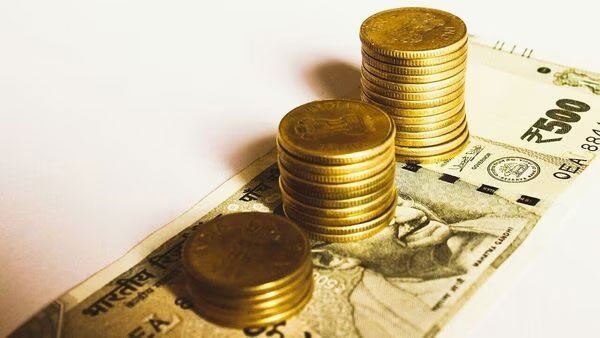Numerous state administrations have been implementing schemes involving the transfer of basic income for a while. These programs are designed to strengthen women’s social and economic status and to offer them a secure financial buffer.
Financial Analysis: Basic Income Schemes Targeting Women Voters
The Rise of Targeted Basic Income Transfers
Political dynamics have shifted, and now parties are unabashedly using basic income transfers as a strategic tool to appeal to women voters. These financial programs are described in various ways, sometimes phrased as ‘handouts’ or colloquially as ‘revdi.’ They are designed with the intention of boosting both the social and economic status of women. Yet, one must critically assess the impact on recipients, as well as the broader economic consequences and long-term viability of these initiatives.
Recent Political Developments
Madhya Pradesh Incentives Yield Results
In Madhya Pradesh, the Ladli Behna Yojna is credited with contributing to the Bharatiya Janata Party’s success during the Assembly elections in November 2023. This initiative, rolled out by the former Chief Minister Shivraj Singh Chouhan in January 2023, guaranteed a monthly sum of ₹1,000 to qualifying women. As of October, the monthly transfer increased to ₹1,250.
New Delhi’s Approach to Female Empowerment
Concurrently, the Finance Minister of Delhi, Atishi, while unveiling the budget for 2024-25, announced the Mukhyamantri Mahila Samman Yojana. This upcoming program for adult women beneficiaries is set to provide them with a monthly allowance of ₹1,000. Atishi anticipates the inaugural payment to reach bank accounts by October.
Himachal Pradesh’s Monthly Contribution
On a similar note, Himachal Pradesh’s Chief Minister, Sukhvinder Singh Sukhu, showcased the Indira Gandhi Pyari Behna Sukh Samman Nidhi Yojna, scheduling payments of ₹1,500 per month for women starting on 1 April.
Karnataka’s Support for Women as Household Heads
Turning south to Karnataka, the Congress government introduced the Gruha Lakshmi scheme last August, aiming to distribute ₹2,000 to every woman who is the primary family earner.
Punjab’s Fiscal Restraint
Punjab’s promised scheme under the AAP government mirrors those mentioned but has yet to manifest, likely a reflection of the state’s fragile financial health.
Congress’s Nationwide Promise
Broadening its gaze, the Congress party has vowed to implement comparable schemes throughout India, given they secure power. This pledge originates from their manifesto for the 2019 Lok Sabha elections. The manifesto introduced the Nyuntam Aay Yojana (Nyay) or a Minimum Income Scheme, with plans to provide ₹6,000 each to the bottom 20% of income households.
Unpacking the Political Undertones of Income Transfer Schemes
The Intent Behind the Fiscal Assistance
Income transfer initiatives are positioned as tools for the socio-economic empowerment of women and provide a crucial financial cushion. Prior to the disbursement of the initial payment, Madhya Pradesh Chief Minister Shivraj Singh Chouhan addressed a group of women, expressing that this financial support aims to transform their lives. According to Chouhan, the money doesn’t just bolster their domestic budget but also offers the freedom to make independent spending choices. The state’s plan is to gradually enhance the monthly allowance to ₹3,000, with Chouhan likening his role to that of a caring elder brother as he launched the program in the state.
In the nation’s capital, Delhi’s finance minister, Atishi, communicated that by executing such a scheme, Chief Minister Arvind Kejriwal is assuming the responsibilities akin to those of an elder brother and a son.
Leaders in Karnataka and Himachal Pradesh, where the Congress party is in charge, attribute these schemes to their party’s longstanding mission to uplift women and better the living conditions of the economically disadvantaged.
The Impacts on Female Beneficiaries
These monetary gifts are provided with no strings attached, allowing the women recipients to decide freely on the use of the funds. The direct bank transfers to women serve to minimize the chances of the money being misspent by their husbands, potentially on items like alcohol.
While state governments have not conducted detailed pilot studies to examine the effects of such unconditional cash transfers, insights can be gleaned from a previous small-scale initiative by the Self Employed Women’s Association of India (SEWA) and UNICEF. This experiment took place over a year ago and targeted communities facing extreme poverty in Madhya Pradesh.
This trial provided sums of ₹200-300 to adults and ₹100-150 to children in select villages for a period of 12-17 months. Crucially, the results countered the concern that free money could lead to complacency. Instead, beneficiaries demonstrated increased productivity and did not show a rise in alcohol consumption. The money was utilized for various beneficial purposes – improving nutritional standards, cutting household debt, boosting school enrolment and attendance, enhancing access to healthcare, and investing in assets that would generate income.
For example, some families invested in livestock like goats, which not only augmented their earnings during the pilot’s duration but also continued to provide financial benefits beyond the program’s end. This initiative also succeeded in reinforcing the role of women, granting them greater financial autonomy and raising their voice in decisions related to the usage of the funds.
Examining the Impact of Cash Transfers Globally
Extensive research has been carried out worldwide on cash transfer programs, both conditional and unconditional. Studies have shown consistent findings, illustrated by the prolonged study launched in Kenya in 2017. Similar to the SEWA-Unicef pilot findings, such transfers did not encourage indolence or increased alcohol consumption. In fact, recipients often shifted towards self-employment. Long-term commitments, like 12-year cash transfers, resulted in higher levels of savings and more investments by households.
The ongoing universal basic income study in Kenya has revealed that sustained cash transfers have a more substantial impact than shorter interventions. Recipients of lump sum payments notably engaged more in entrepreneurial activities. This innovative Kenyan cash transfer project is a cooperative effort between philanthropic entities and non-profit organizations.
The Financial Feasibility of Universal Basic Income
The execution of a long-term basic income scheme targeting the poorest groups is feasible only if both central and state governments can secure substantial funding. This may necessitate a restructuring of their fiscal strategies or integrating several current welfare programs.
Arvind Subramanian, the former Chief Economic Adviser in the Ministry of Finance, promoted the concept of a universal basic income in the 2016-17 Economic Survey. He advocated for substituting some existing welfare initiatives with a cash transfer scheme instead of running them concurrently. According to the Survey, the multitude of welfare programs run by central and state governments had been ineffective in eradicating poverty. However, phasing out these welfare programs could be challenging.
Budget Allocations for Cash Transfer Initiatives
States such as Karnataka and Madhya Pradesh have taken significant steps by introducing income transfer schemes for women. Their longevity and sustainability are key considerations for the future.
Karnataka has earmarked over ₹28,600 crore for its scheme, accounting for approximately 63% of the total projected social welfare and nutrition budget. This amounts to nearly 8% of the state’s total expenditure for the 2024-25 period.
The government of Delhi has allocated ₹2,000 crore, which represents about 2.6% of its total budget of ₹76,000 crore for the same fiscal year. When Madhya Pradesh launched the Ladli Behna Yojna last year, the anticipated annual expenditure was ₹15,000 crore. The financial dedication of these states to such schemes is a testament to their commitment to women’s economic empowerment.











